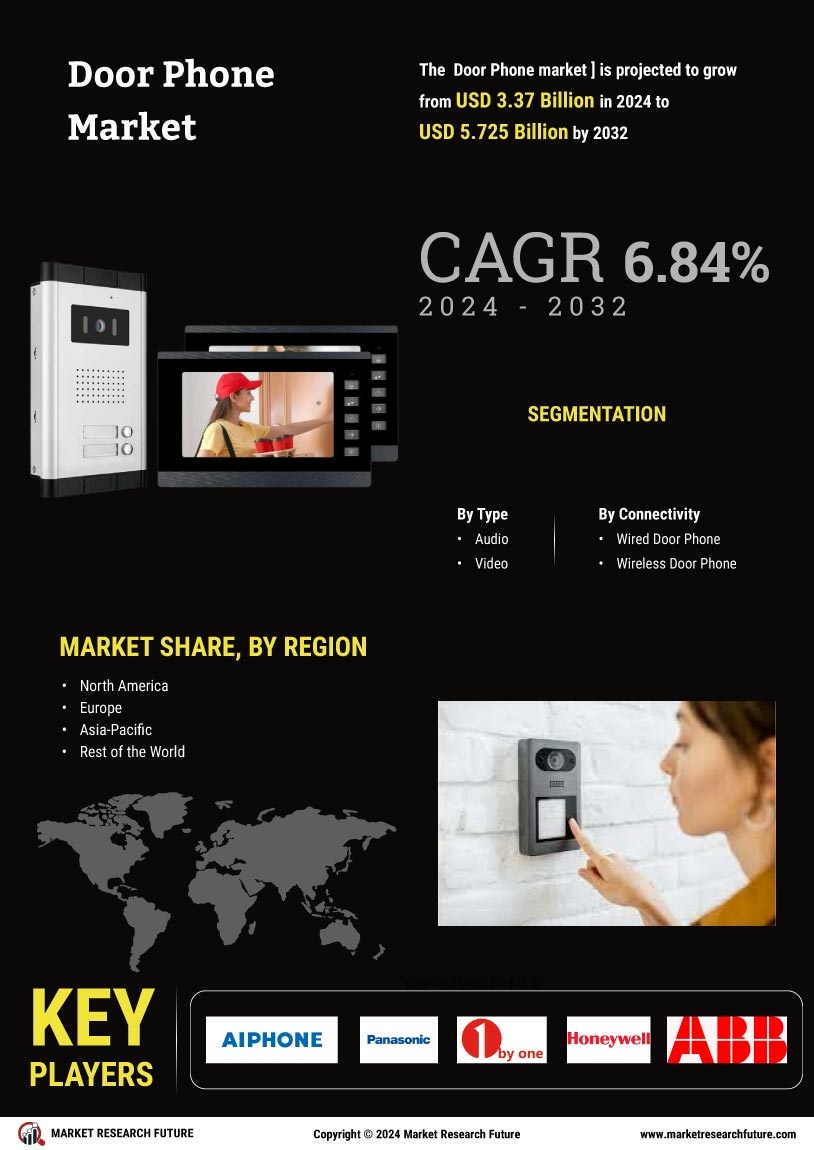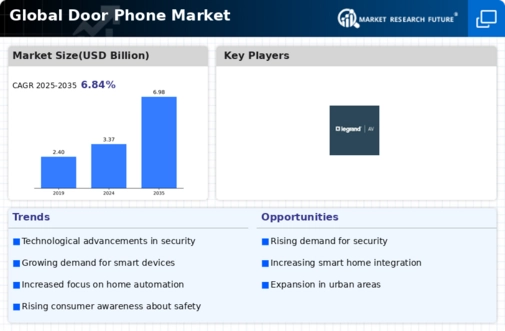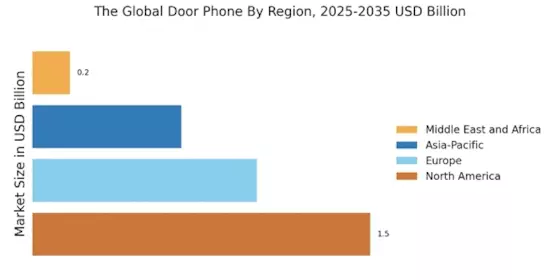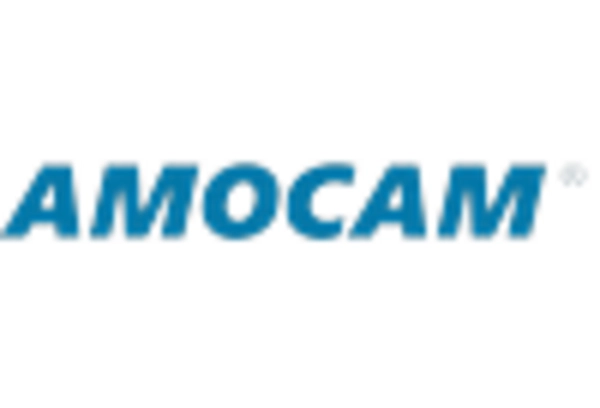Growing Urbanization
Urbanization is a significant driver of The Global Door Phone Industry, as more individuals migrate to urban areas in search of better opportunities. This demographic shift has led to an increase in residential and commercial construction, thereby boosting the demand for door phone systems. As of October 2025, urban areas are witnessing a rise in multi-family housing units, which often require integrated security solutions. The need for effective communication and security in densely populated environments is propelling the adoption of door phones. Furthermore, urban dwellers are increasingly prioritizing safety and convenience, making door phone systems an attractive option. The ongoing trend of urbanization is expected to continue influencing the market positively, as more consumers seek to enhance their living and working environments.
Rising Disposable Income
The increase in disposable income across various regions is contributing to the growth of The Global Door Phone Industry. As consumers experience improved financial conditions, they are more inclined to invest in advanced security solutions for their homes and businesses. The market is seeing a shift towards premium door phone systems that offer enhanced features and aesthetics. As of October 2025, the demand for high-end door phones, which include features such as video recording, cloud storage, and advanced connectivity options, is on the rise. This trend indicates a growing willingness among consumers to prioritize security and convenience, reflecting broader economic trends. The rising disposable income is expected to continue to fuel the market, as more individuals seek to enhance their living environments with sophisticated security solutions.
Rising Security Concerns
The increasing prevalence of security threats has led to a heightened demand for advanced security solutions, including door phones. As individuals and businesses seek to enhance their security measures, The Global Door Phone Industry is experiencing significant growth. According to recent data, the market is projected to expand at a compound annual growth rate of approximately 10% over the next five years. This trend is particularly evident in urban areas, where crime rates are higher, prompting consumers to invest in reliable door phone systems. The integration of features such as video surveillance and remote access further appeals to consumers, as they provide an added layer of security. Consequently, the rising security concerns among consumers and businesses alike are driving the demand for innovative door phone solutions.
Technological Advancements
Technological innovations are playing a pivotal role in shaping The Global Door Phone Industry. The advent of smart door phones, equipped with features such as Wi-Fi connectivity, mobile app integration, and high-definition video capabilities, has transformed consumer expectations. As of October 2025, the market is witnessing a surge in demand for these technologically advanced systems, which offer enhanced functionality and convenience. The integration of artificial intelligence and machine learning into door phone systems is also gaining traction, enabling features like facial recognition and motion detection. This technological evolution not only improves user experience but also positions door phones as essential components of modern security systems. The continuous development of new technologies is likely to sustain the growth trajectory of the market in the coming years.
Increased Focus on Home Automation
The growing trend of home automation is significantly impacting The Global Door Phone Industry. As consumers increasingly seek to integrate various smart devices within their homes, door phones are becoming essential components of comprehensive home security systems. The market is witnessing a shift towards products that offer seamless integration with other smart home devices, such as smart locks and security cameras. This trend is supported by the rising consumer awareness regarding the benefits of home automation, including enhanced security and convenience. As of October 2025, the demand for door phones that can be controlled remotely via smartphones or tablets is on the rise. This increased focus on home automation is likely to drive innovation and competition within the door phone market, as manufacturers strive to meet evolving consumer preferences.
















